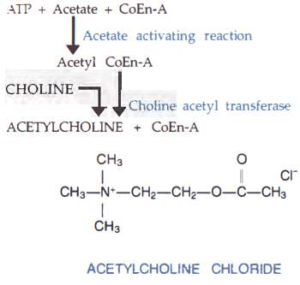Autonomic Nervous System (ANS)

Objective
At the end of this lecture, student will be able to
Describe the autonomic nervous system
Differentiate between sympathetic and parasympathetic nervous system
Explain neurohumoral transmission
Explain location, function and characterisation of cholinergic receptors
Content
ANS
Introduction to autonomic nervous system
Sympathetic and parasympathetic nervous system
Neurohumoral transmission
Location, function and characterisation of cholinergic receptors
Autonomic Nervous System (ANS)
Some degree of autonomy (Langley -1898)
Innervates heart, smooth muscle, glands, viscera
Possess inherent physiological activity
Nervous influence augment/ reduces initial function level
Interference does not completely abolish
Built in protective mechanism
Skeletal muscle: interferences – Completely paralysis
Divisions of Nervous System

Divisions of ANS
• Sympathetic – Stress / fight or flight
• Parasympathetic – Tissue building reactions
Control of ANS
• Represented at all levels of CNS
• Autonomic functions are regulated by RF along with cranial nerve nuclei
• Hypothalamus: Posterior, lateral & midline nuclei
• Thalamus: center and relay station for sensory perception
• Limbic system: Relate emotions to CNS
Autonomic Innervation

ANS Neurotransmitters

Differences between Sympathetic and Parasympathetic NS
| Sympathetic | Parasympathetic | |
| Origin | Dorsolumbar (T1 to L2/L3) | Craniosacral (III, VII, IX, X, S2-S4 |
| Post GF | Long | Short |
| Transmitter | NA, Ach | Ach |
| Transmitter stability | Stable, diffuses, wider action | Degrades rapidly |
| Function | Taking stress/ emergency | Assimilation of food, conservation of energy |
Neurohumoral Transmission
• Elliot (1905) – PS function by release of Adr like substances
• Dixon (1907) – Vagus nerve release muscarine like chemical
• Otto Loewi (1921) – Direct proof by perfusing two frog heart
• 1926 – Ach
• Von Euler (1946) – Sympathetic transmitter NA
Criteria to be a Neurotransmitter
• Should be present in presynaptic neuron
• Should be released in the medium following nerve stimulation
• Identicla response to nerve stimulation
• Antagonised
Steps involved in Neurohumoral transmission
• Impulse conduction
• Transmitter release
• Transmitter action on post junctional membrane
• Post junctional activity
• Termination of transmitter action
Neurohumoral Transmission

Co –Transmission
• Classical one neuron – one transmitter over simplification
• Release more than one neurotransmitter
• Purines: ATP, adenosine
• Peptides: NPY, VIP
• Sub P, Enkephalins, Somatostatins
• NANC

Cholinergic System and Drugs
• Major NT – Ach
• Locally synthesized in cholinergic nerve endings
• Degraded by AChE

Synthesis of Acetylcholine

Receptors
• Located on autonomic effector cells
• Heart, blood vessels, eye, smooth muscle, GIT glands, repiratory, urinary tracts, sweat glands, CNS
• Post synaptic receptors & Presynaptic auto receptors
• M1 – M5
• NN, NM
Sites of Cholinergic Action and Types of Receptor
| S. No | Site | Receptor | Agonist | Antagonist |
| 1 | All post ganglionic PS & few post ganglionic S | M | Muscarine | Atropine |
| 2 | Ganglia & Adrenal medulla | NN | DMPP | Hexamethonium |
| 3 | Skeletal muscle | NM | PTMA | Curare |
| 4 | CNS (Cortex, BG, Spinal cord) | M | Muscarine | Atropine |
| N | Carbachol | Curare |
Location and Function of Cholinergic Receptors
| M1 – Neuronal | M2 – Cardiac | M3 – Smooth muscle and gland |
| Ganglia: EPSP Gastric glands: + Secretion CNS: Learning and memory function |
SA Node: Hyperpolarisation AV: Conduction velocity Atrium: FOC Ventricle: FOC Nerve endings: Ach release CNS: Tremor, analgesic Smooth muscle: Contraction |
Smooth muscle: Contraction Iris: Pupil constriction Ciliary muscle: Contraction Exocrine glands: Secretion Vascular endothelium: Release of NO, Vasodilation |
Characteristic of Cholinergic Receptors
| M1 – Neuronal | M2 – Cardiac | M3 – Smooth muscle and gland |
| GPCR | GPCR | GPCR |
| IP3 / DAG PLA2 |
K+ opening cAMP |
IP3 / DAG PLA2 |
M4: + or – of NT release in brain
M5: Facilitate DA release and mediate reward behavior
FAQs
- Can stress permanently damage the Autonomic Nervous System? Chronic stress can lead to dysregulation of the ANS, but with proper stress management, the system can often recover.
- Are there natural ways to support Autonomic Nervous System health? Yes, adopting a balanced diet, regular exercise, and stress management techniques can support ANS health naturally.
- How does aging affect the Autonomic Nervous System? Aging brings natural changes to ANS function, emphasizing the need for tailored healthcare strategies in the elderly.
- Can dysautonomia be cured? While there may not be a cure for dysautonomia, various treatments and lifestyle modifications can help manage symptoms effectively.
- Are there any new breakthroughs in autonomic neuroscience? Ongoing research in autonomic neuroscience continues to uncover new insights and potential breakthroughs in understanding and treating ANS-related conditions.
Summary
• Sympathetic: Stress / fight or flight
• Parasympathetic: Tissue building reactions
• Steps involved in Neurohumoral transmission are;
o Impulse conduction
o Transmitter release
o Transmitter action on post junctional membrane
o Post junctional activity
o Termination of transmitter action
For Detailed PDF Notes Click on Download Button
